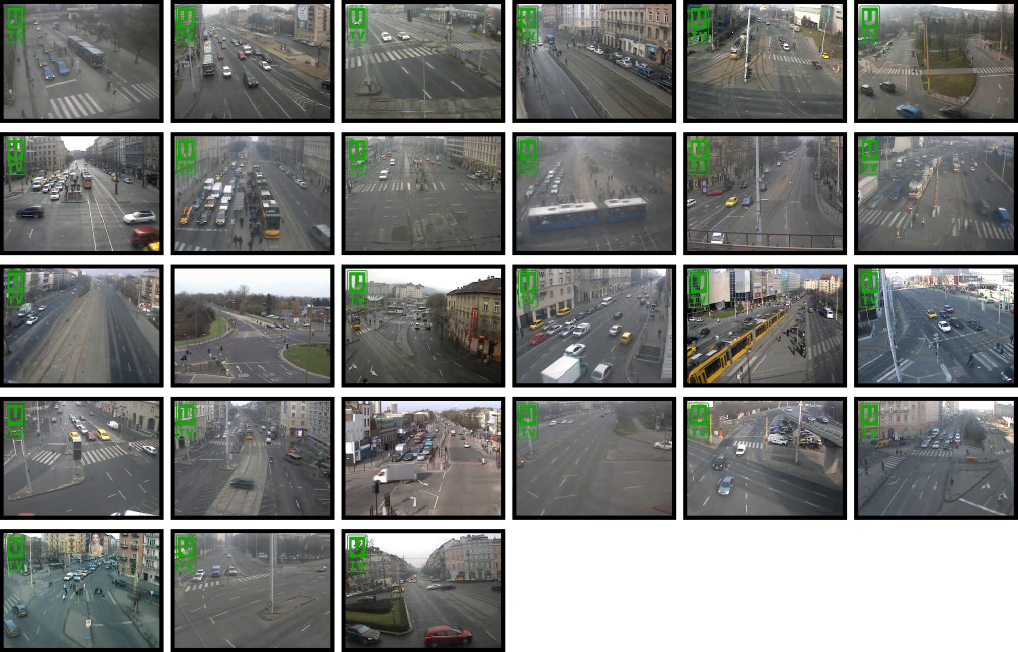·
Home
Discovery of Shared Semantic Spaces for Multi-Scene Video
Query and Summarization
Xun
Xu, Timothy Hospedales and Shaogang
Gong
Queen Mary, University of London
Downloads: [PDF] [Supplemntary] [Slides]
[Dataset Introduction] [QMDTS Dataset] [Annotations]
Introduction
The growing rate of
public space CCTV installations has generated a need for automated methods for
exploiting video surveillance data including scene understanding, query, behaviour annotation and summarization. For this reason,
extensive research has been performed on surveillance scene understanding and
analysis. However, most studies have considered single scenes, or groups of
adjacent scenes. The semantic similarity between different but related scenes
(e.g., many different traffic scenes of similar layout) is not generally exploited
to improve any automated surveillance tasks and reduce manual effort.

Exploiting
commonality, and sharing any supervised annotations, between different scenes
is however challenging due to: Some scenes are totally un-related -- and thus
any information sharing between them would be detrimental; while others may
only share a subset of common activities -- and thus information sharing is
only useful if it is selective. Moreover, semantically similar activities which
should be modelled together and shared across scenes may have quite different
pixel-level appearance in each scene. To address these issues we develop a new
framework for distributed multiple-scene global understanding that clusters
surveillance scenes by their ability to explain each other's behaviours; and further discovers which subset of
activities are shared versus scene-specific within each cluster. We show how to
use this structured representation of multiple scenes to improve common
surveillance tasks including scene activity understanding, cross-scene
query-by-example, behaviour classification with
reduced supervised labelling requirements, and video summarization. In each
case we demonstrate how our multi-scene model improves on a collection of
standard single scene models and a flat model of all scenes.

Queen Mary Multi-Camera Distributed Traffic Scenes
Dataset (QMDTS) 
The Queen Mary Multi-Camera Distributed Traffic Scenes
Dataset (QMDTS) was collected to facilitate the study of transfer learning
models for video semantic content analysis and summarisation.
This dataset consists of surveillance video footage from 27 distributed and
disjoint camera views of busy traffic scenes in urban environments. This
dataset includes two existing traffic scene datasets: QMUL Junction Dataset and QMUL Roundabout Dataset and a brand new 25 traffic scenes
collected from urban environment. We release a trimmed train/test raw videos
for all of the 27 scenes, named Queen Mary Multi-Camera Distributed Traffic Scenes Dataset
(QMDTS) along with the reference annotation for 6 scenes. An introduction to the dataset and
annotations is recommended for properly using the data.

Multi-Layer Clustering
We addressed how to
discover related scenes and learn shared topics/activities across multiple
scenes. At the scene level we group related scenes according to activity
correspondence (Section IV-A); within each scene cluster we further compute a
shared activity topic basis so that all activities within that cluster are
expressed in terms of the same set of topics (Section IV-B).

Demo
Dataset Introduction
27 urban traffic
scenes grouped into 11 clusters by our algorithm
Multi-Scene Profiling
Profile traffic behaviours by a shared activity topic basis.
Cross Scene Query
Given query example
search for related behaviours in other scenes.
Multi-Scene Summarization
Summarize
representative behaviours in a group of scenes to
minimize redundancy.
Citation
1.
Discovery of Shared Semantic Spaces for
Multi-Scene Video Query and Summarization PDF Supplementary
Xun Xu, Timothy Hospedales and Shaogang Gong
IEEE
Transactions on Circuits and Systems for Video Technology, 2017
